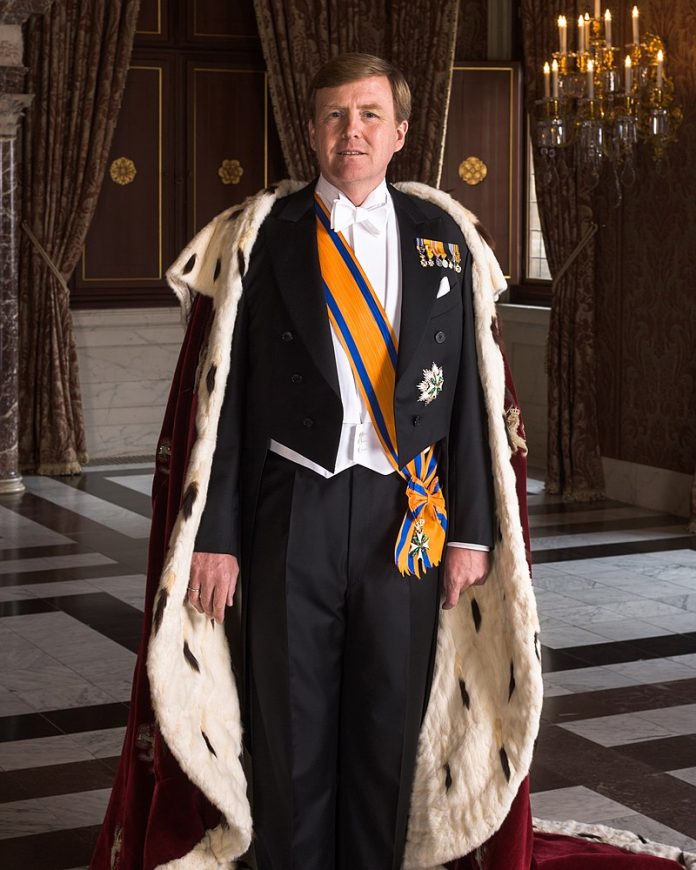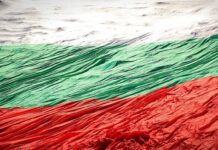
By Pieter de Jonge, a Dutch historian and publicist
Last week, the new German government entered into office. The German coalition agreement was finalized two months after the elections. That’s less than a quarter of the time during which the Netherlands did not witness an agreement on new government, since the Dutch parliamentary elections of 17 March 2021. While an agreement may finally be in sight this week, it is worth exploring why it has taken so long.
The answer, in one sentence: the leaders of the two largest parties do not like each other. There is no other proper explanation. Coalition governments tend to lose seats during elections. The Rutte III coalition however gained two seats. Something like this has not happened since 1998.
Among the coalition parties, the right-liberal VVD of Prime Minister Mark Rutte emerged as the largest party with 34 seats during the March election. That’s a gain of one seat. The Christian Democratic CDA lost 4 seats and is now the third party in the coalition. The left-liberal D66 went from 19 to 24 seats. The orthodox protestant ChristenUnie (left-wing on economic and social issues) remained stable at 5. After the elections, Christian democratic CDA MP Pieter Omtzigt decided to leave the CDA to keep his seat (he secured sufficient “preference votes” for 5 seats). Despite this, the coalition retains a majority of 77 of the 150 seats in the House of Representatives.
Netherlands, Final Election Result:
VVD-RE: 21.9% (+0.6)
D66-RE: 15.0% (+2.9)
PVV-ID: 10.8% (-2.3)
CDA-EPP: 9.5% (-2.9)
SP→LEFT: 6.0% (-3.1)
PvdA-S&D: 5.7%
GL-G/EFA: 5.2% (-3.9)
FvD-ECR: 5.0% (+3.2)
…+/- vs. 2017
➤ https://t.co/dz1X5eQdmV#TK2021 #verkiezingsuitslag pic.twitter.com/dDc03tF02d
— Europe Elects (@EuropeElects) March 26, 2021
Netherlands: liberal VVD (RE) emerges as largest in most municipalities while D66 (RE) does so in the bigger cities. Centre-right CDA (EPP) wins in several rural municipalities and in the Caribbean. Christian parties SGP (ECR) and CU (EPP) do well in the so-called 'Bible Belt'. pic.twitter.com/f5bDMejtV2
— Europe Elects (@EuropeElects) March 19, 2021
In almost every country, parliaments rely on absolute numbers. The party with the most seats is the leading formation, even if it loses seats following elections. D66, however, claimed to be the real winner, arguing that they secured the largest relative gain. Mathematically, there is something to be said for this, but it ignores the reality of parliamentary politics.
The VVD is now the largest party for the fourth time in a row. Until now, the VVD has always been bigger than D66. D66 has never been the second biggest party in parliament before. Only once before, they had managed to obtain 24 seats, in 1994. That year, the Netherlands had its first ‘purple’ cabinet, composed of the social democratic PvdA, the VVD and D66. Wim Kok, of the PVDA, became prime minister. Four years later, the other two parties won, while D66 lost. PvdA and VVD had enough seats to continue governing without a third party, yet they remained loyal to D66.
D66 would subsequently lose 10 elections in a row, at all levels. The low point took place in the autumn of 2006. D66 shrank to three seats in the House of Representatives. If the Netherlands would have had a 5% electoral threshold, like its two neighbours, D66 would then have disappeared from the Lower House. D66 can hardly be called a stable party, certainly in comparison with the VVD. If being the second largest party is enough to make them go off the rails, the worst is to be feared if they would ever become the largest.
Rutte, however, is not completely innocent. He is the first Dutch Liberal prime minister since Pieter Cort van der Linden (1913-1918). He also hopes to break the record of Ruud Lubbers (CDA) as the longest-serving Dutch prime minister (1982-1994). For this, he does not even have to serve out a full term, until 2025. It does not matter that he is currently only in a caretaker capacity. Then what kind of parliament would send away an outgoing prime minister in the middle of Covid?
No role for the King
In the Dutch constitutional system, King Willem-Alexander (picture) currently has no possibility of exerting pressure on the formation process. The Netherlands is a constitutional monarchy. In 2011, it was decided to remove the King’s role from the formation process. Previously, the party leaders would visit the king or queen one by one, to suggest who should be part of a coalition. Next, the monarch would appoint an “informateur”, whose task it would be to check whether the intended parties were actually willing to cooperate. The third step was the appointment of the intended prime minister as “formateur”, to put together a government.
In 2012, for the first time, a government was formed without a role for the monarch. The election result was clear: 41 seats for VVD, 38 for PvdA, and a new government emerged after two months. In 2017 and 2021, the results were not so clear. Then, it became apparent that while parliament had removed the King from the formation process, it had not put a clear alternative procedure in place.
The King or Queen was an informed outsider: aware of what was going on, without any political interests of his own. Now that the parliament has the formation entirely in its own hands, it turns out to be a problem that everyone involved is biased. And there’s no one in the process with sufficient authority to keep everyone in line. The proposal to keep the head of state out of the formation process incidentally came from the republican D66.
Last autumn, D66 overplayed its hand. Rumours surfaced in the media that VVD formateur Johan Remkes would have been drunk during the negotiations. Anyone who has worked with Remkes knows that he never drinks during work. D66’s communication team soon turned out to be the source of these rumours. Bad opinion polls did the rest.
According to the latest rumours, the number of Ministers in the new coalition, which would involve the same parties as the current caretaker government, would increase from 16 to 20, ‘to reduce the workload’. There would also be ten state secretaries.
In the Netherlands, elections take place every four years. Next March, there are municipal elections. D66 and CDA are losing in the polls. Incidentally, provincial elections will follow in 2023. In the Netherlands, the Upper House (senate) is elected indirectly – via the provincial elections. In 2024, there will be European elections. In sum, the popularity of “Rutte IV” will be gauged annually in the interim. That’s if this cabinet does not fall prematurely.
Netherlands, peil poll:
(Seat projection)VVD-RE: 32
PVV-ID: 20
D66-RE: 16
PvdA-S&D: 10
GL-G/EFA: 9
SP→LEFT: 8
PvdD-LEFT: 8
BBB-*: 8
JA21-ECR: 7
FvD-ECR: 6
CU-EPP: 6
Volt-G/EFA: 6
…+/- vs. 27-26 Nov.
Fieldwork: 3-4 Dec. 2021
Sample size: N/A
➤ https://t.co/dz1X5eQdmV pic.twitter.com/Ou2iGNpNv5— Europe Elects (@EuropeElects) December 5, 2021
The parallels between Rutte and Angela Merkel
Angela Merkel‘s resignation as Chancellor makes Rutte the longest-serving European government leader. There are many parallels between him and Merkel. They are both people from the political centre who became leader of a centre-right party. They do not have strong personal convictions, but react to circumstances and defend the emerging consensus. Another similarity: they do not tolerate strong figures. They are generals who at best would tolerate sergeants, but not colonels. You don’t need a military background to understand how such a leadership style is detrimental to an organisation in the long run.
In 16 years, it has become less and less clear to Germans what the CDU stands for. Everything revolved around the chancellor’s bonus. No thought was given to what the party should do after Merkel. During her last election campaign as leader, in 2017, Merkel achieved the worst result in the party’s history. A long formation followed. Now, the CDU is in opposition. Is this a harbinger of what is in store for the VVD?
A critical constituency
Just like with the German CDU, VVD voters are pragmatic. This in contrast to party congresses of the PvdA, where Ministers are incessantly being told what they have done wrong. Inside CDA and D66, there is more of a club spirit, but the militants tend to stress that their wishes must be taken into account. Inside the VVD, things are more easy-going. As long as the VVD governs and gets things done, it’s all well and good.
During the VVD party congress of 27 November, Joost Nijhuis, a municipal VVD councillor in the provincial town of Enschede and the chairman of the small business council inside the VVD, threw a spanner in the works. He submitted a motion to force an extra congress to be organised after the formation, to see to what extent the coalition agreement matches the VVD election programme. He thereby signaled that after ten years of government, it is becoming less and less clear what the party stands for. The fact that the VVD is the largest party says little, he thinks, adding: “A company which is the largest player in a shrinking market can be proud of its past, but it must also look to the future.” A party without a clear profile and, one day, without a prime ministerial bonus, may indeed find it difficult to win elections.
Van de SPOTJES van @bentebecker ben ik altijd gecharmeerd geweest. Zowel alle leden als kiezers geloof(den?) ook dat @VVD 't meent. De lakmoesproef echter is aanstaande. Doet Rutte 4 (weer) niks zal de VVD imploderen.'t Vertrouwen is dan (definitief) WEG! VVD let op uw saeck🧐 https://t.co/QF2Y0LunIx
— Joost Nijhuis (@joostnijhuis) December 12, 2021
Nijhuis was supported by other members, including Michael van Praag, a former UEFA vice-president and since four months, also a chairman of his local VVD chapter. During those four months, he spoke to many former members. They had quit because they no longer recognised themselves in the VVD. Most of them had first made their concerns known internally. When this turned out to fall on deaf ears, they resigned.
Conclusion
The long Dutch formation process may have ended up eroding PM Rutte’s authority. It becomes ever clearer that his own supporters no longer support him unconditionally. Meanwhile in March, a new conservative-liberal party, JA21, was elected to the Lower House. This is a party which, for now, is staying away from the more controversial positions of Geert Wilders’ PVV and Thierry Baudet’s Forum for Democracy. For the first time since 2010, disappointed VVD voters that do not want to vote for populist parties have an alternative.
Disclaimer: www.BrusselsReport.eu will under no circumstance be held legally responsible or liable for the content of any article appearing on the website, as only the author of an article is legally responsible for that, also in accordance with the terms of use.












